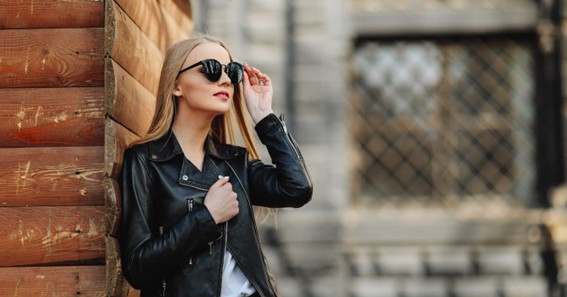Are you curious to know what is bovine leather? You have come to the right place as I am going to tell you everything about bovine leather in a very simple explanation. Without further discussion let’s begin to know what is bovine leather?
What Is Bovine Leather?
Leather has been a prized material for centuries, renowned for its durability, versatility, and timeless appeal. Among the various types of leather available, bovine leather holds a significant place due to its widespread use and popularity. Derived from cattle, bovine leather has been utilized in a wide range of applications, including fashion, accessories, upholstery, and more. In this blog post, we will delve into the world of bovine leather, exploring its production process, characteristics, and its place in our everyday lives.
The Production Process:
Bovine leather is derived from the hides or skins of cattle, typically from cows or bulls raised for meat and dairy production. The production process involves several stages to transform raw hides into the supple, durable, and refined material that we recognize as leather.
- Preparing the Hide: The initial step involves removing the hair or fur from the hide through a process known as de-hairing. This is followed by removing any flesh, fat, and other impurities through a process called fleshing.
- Tanning: Tanning is the crucial step that converts the raw hide into leather. There are various tanning methods employed, but the most common ones are chrome tanning and vegetable tanning. Chrome tanning uses chromium salts to expedite the process, resulting in soft and flexible leather. Vegetable tanning, on the other hand, utilizes natural tannins from plant sources, creating a sturdier and firmer leather with a distinct patina over time.
- Finishing: After tanning, the leather undergoes a finishing process that involves dyeing, buffing, and applying protective coatings. This enhances its aesthetic appeal, color vibrancy, and resistance to wear and tear.
Characteristics And Uses:
Bovine leather is cherished for its exceptional characteristics that make it suitable for a wide range of applications:
- Durability: Bovine leather is known for its strength and durability. It can withstand daily use and is resistant to abrasion, making it a popular choice for products that require longevity, such as shoes, handbags, and upholstery.
- Versatility: Bovine leather is highly versatile and can be transformed into various textures and finishes, including smooth, pebbled, or embossed patterns. It can adapt to different styles and designs, making it suitable for both classic and contemporary fashion.
- Patina: With time and use, bovine leather develops a unique patina. This natural aging process adds character and depth to the material, giving it a distinctive and timeless appearance.
- Comfort: Bovine leather has a supple and soft texture that improves with wear, conforming to the body and providing a comfortable experience for items like shoes, jackets, and furniture.
Bovine Leather And Sustainability:
Sustainability is an increasingly important consideration in the production and use of leather. Responsible sourcing, transparency in the supply chain, and the use of environmentally friendly tanning processes are key factors in minimizing the environmental impact of bovine leather production. Ethical practices, such as ensuring animal welfare and reducing waste through efficient manufacturing techniques, are also significant aspects of sustainable leather production.
Conclusion:
Bovine leather, derived from cattle hides, is a prized material cherished for its durability, versatility, and natural beauty. With a production process that transforms raw hides into supple and refined leather, it finds its way into various aspects of our daily lives. From fashion and accessories to upholstery and furnishings, bovine leather represents a combination of timeless appeal, reliability, and comfort. By embracing sustainable practices in leather production, we can ensure the continued enjoyment of this remarkable material while respecting the environment and promoting ethical practices.
FAQ
Is Bovine Leather Genuine Leather?
Is Bovine Leather Real Leather? Bovine leather comes from animal hide and is not mixed with any artificial elements. In its natural and pure form, bovine leather can safely be considered real. Animal skin goes through a long tanning process before it can be used in hundreds and thousands of fashion products.
Is Bovine Leather Better Than Calf Leather?
YOUNG BOVINE
The material is more rigid than calf’s leather and more prone to imperfections such as insect bites, scars, wrinkles and veining (which is sometimes corrected with sanding and buffing). Young bovine can be a high quality and soft-to-the-touch material if throughly inspected for quality.
Is Bovine Leather A Calfskin?
Bovine leather is a broad term for the materials that come from tanning a bovine coat. Bovines, or “Bovinae” in Latin, are a subfamily of “Bovidae” and include many species of animals, such as cows, buffaloes, bulls, and calves. These animals are used and valued in the leather goods industry.
How Do You Protect Bovine Leather?
Avoid cleaning products with alcohol, turpentine or other mineral spirits as they will discolor and dry out leather. Stuff your unused bag with bubble wrap to restore and hold its shape. To keep your purses looking beautiful, keep cosmetics inside a pouch. Cap all pens and anything that leaks.
I Have Covered All The Following Queries And Topics In The Above Article
What Is Bovine Leather Made Of
Bovine Leather Is Made Of What
What Is Leather Bovine Suede
What Is Bovine Leather?
Is Bovine Leather Real Leather
Bovine Leather Vs Genuine Leather
Is Bovine Leather Good Quality
Is Bovine Leather Halal
Is Bovine Leather From Pig
Calfskin Vs Bovine Leather
Is Bovine Leather Full Grain
Bovine Leather Vs Full Grain Leather
What Is Bovine Leather









